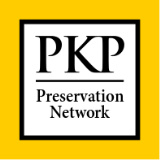Innovation of Rice Husk as Resist Agent for Fabric Embellishment: Implication on Waste Management
Keywords:
Innovation, Rice husk, Resist agent, Fabric embellishment, Waste managementAbstract
The study concerned with innovation of rice husk as resist agent for fabric embellishment: Implication on waste management. Two research questions were formulated to guide the study. The study utilised one shot experimental research design to obtain data. It measures only the post-test results and does not use a control group. The population of the study comprises of students of Fine and Applied Art and Home Economics departments respectively in Federal College of Education Kontagora in Niger State. This population was selected because the students carry out practical on fabric embellishment and as such will be able to give valid data.A sample size of fifty (50) was used for the study. A purposive sampling technique was used to select this sample from the two departments. The main instrument for this study was a researcher self-designed questionnaire, which was face validated by statistician and one professor in textile science department in Ahmadu Bello University Zaria. Reliability of the instrument was determined through pilot study. An internal consistency coefficient of 0.87 was obtained through Cronbach’s alpha test and the findings revealed that the resist agent for fabric decoration was produced from rice husk through the addition of antisol (CMC) which serves as a binder and water to the husk .The production exercise was demonstrated to the respondents. It was also revealed that rice husk is a suitable resist agent for effective fabric embellishment.
Downloads
References
Ajayi, K., KAlyani M.,Devendra K. & Oni, P.(2012). Properties and Industrial Application of Rice husk, International Journal of Emerging Technology and Advanced Engineering. 2(10), 13-19
Anurigwo, S. (2000). Environmental Sanitation and Municipal Waste Management in Imo State; Way Forward. A paper presented at the workshop on environment sanitation and proper waste management organized by ISEPA. 4-
Audubon, (2009). Surface Design-Fine Art & Surface Design, Retrieved from http://www.michaelhoulistonsurfacedesign.com on the 10th September, 2019.
Bosence, S. (1985). Hand Block Printing & Resist Dyeing. New York: Arco Publishing Inc. bran.IV. Egg production of hens on diets with defatted Australianrice bran.Anim. Feed Sci. Technol., 27:259- 268.
Camila, J. (2012). Surface and Parttern Design Retrieved from http://noaleco.com/blog/what-is-fabricdecoration/ on the 5th of September, 2019.
Eric, R. (2015). Texile/fabric decoration http://www.fitnyc.edu/2813.asp Federal Ministry of Education: Craft Manual on Beading and Textile Design for Art and Craft.
Mclntyre, J. E. & Daniels, P.L. (1997). Textile Terms and Definitions (10th ed.) Manchester: The Textile Institute.
Okebule, P.A. (2001). Our Environment: OurDetiny. A paper delivered at thedistinguished lecture series of AdeniranOgunsanya College of Education cited in STAN Environmental Education Series No. 5 P.1
Tchnobauoglous, G., Theisen, H. &Uigil, S. (1993). Evolution of Solid waste management in Integrated solid waste management McGraw Hill Book. Internal Edition.
Wada, Y. I. (2002). Memory on Cloth-Shibori Now. New York: Kodansha America.
Downloads
Published
Issue
Section
License
Copyright (c) 2021 YOHANNA Andrew, OJIUDE Perpetua Ukwuoma , GANA, James

This work is licensed under a Creative Commons Attribution-NonCommercial 4.0 International License.






.png)


